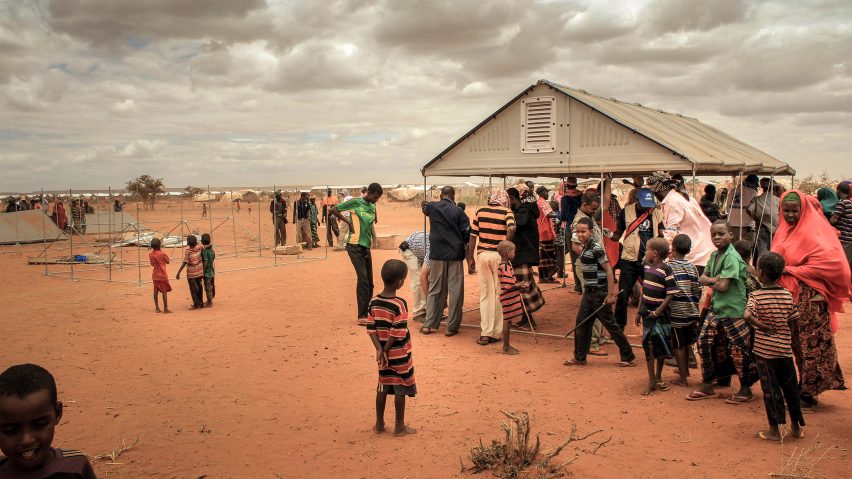
IKEA refugee shelter to be redesigned following safety fears and design flaws
Deployment of IKEA's award-winning refugee shelter was put on hold due to concerns over a range of design issues including accessibility and fire risk, Dezeen has learned.
Update 29/04/17: the United Nations High Commission for Refugees has admitted that 10,000 shelters have been mothballed over concerns about fire risk.
Better Shelter, the social enterprise that produces the product, said a new version of the shelter was under development to address the issues and would be launched later this year.
"Following the identification of certain quality issues and based on experience gained and lessons learned in the field, deployment of shelters was put on hold," said Märta Terne, head of marketing and communication at Better Shelter.
"This was followed by intensive research and development efforts by Better Shelter and [United Nations refugee agency] UNHCR together, with the objective of launching an improved model in 2017, while ensuring that the shelters already produced would be fit for purpose."
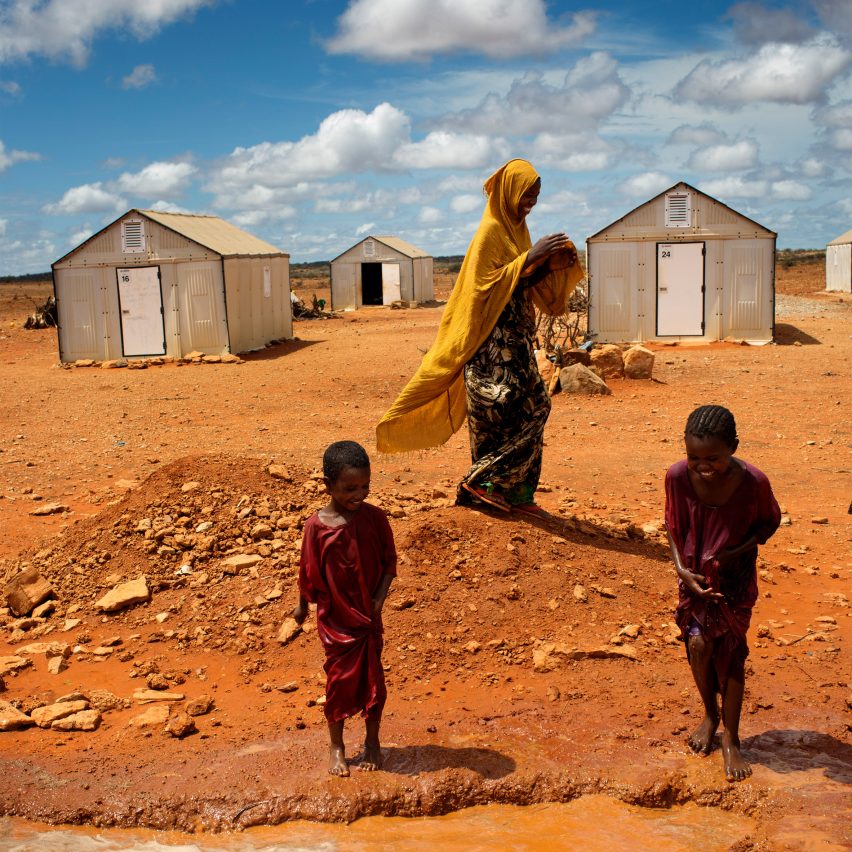
Existing stocks of the shelter are now being redeployed, she said, adding that the organisation was introducing new guidelines about the spacing of shelters following concerns about the spread of fire.
"We've looked at how we can improve the safety distance between units in camp settings and how we can minimise the risk of fire spreading between shelters in the case of a fire starting in a settlement."
The new version of the flat-pack shelter will have improved ventilation and lighting, and a stronger frame and wall panels.
"Quality issues that we've worked on have been focused to the envelope (roof and walls) primarily," Terne said. "A lot of work has been put into improving the panels, which will be lighter and stronger but also cheaper to produce. We have also added more ventilation inlets, and the shelter's frame has been improved and reinforced. The lamp and solar panel will be updated, with improved performance and durability."
"The wellbeing of our end-users comes first and in case of any uncertainties around the shelter's performance, we are committed to addressing those immediately," she added. "The shelters currently in stock are now in the pipeline for redeployment to various UNHCR operations. Meanwhile, we are finishing off the development work on the updated shelter version of which new order figures will be determined in due course."
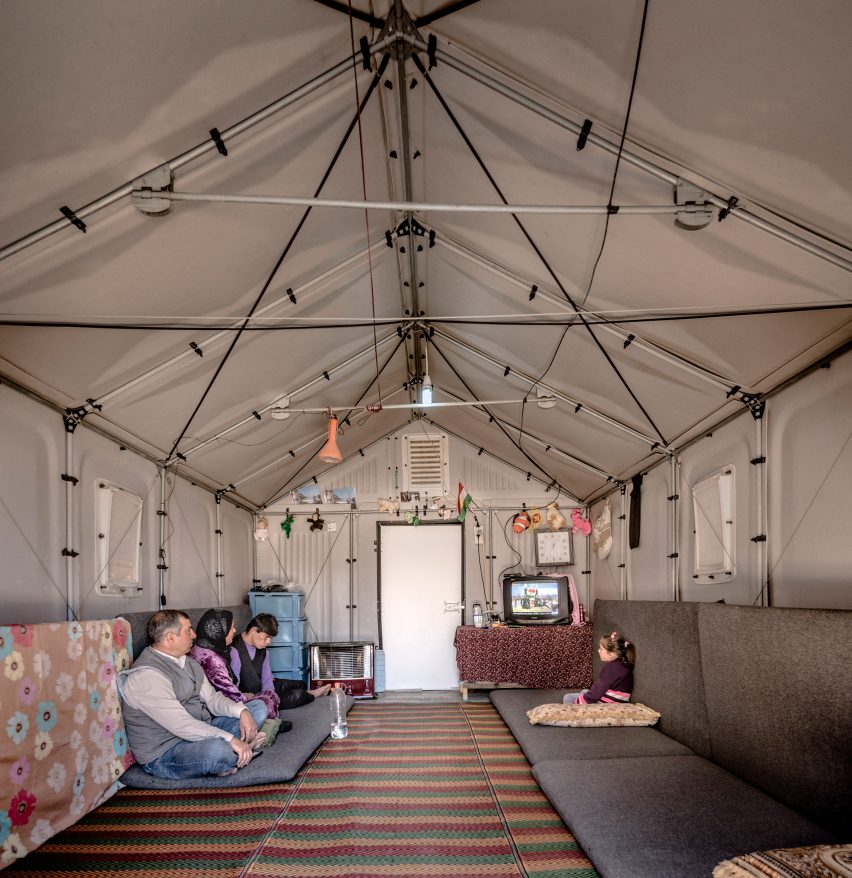
The announcement follows criticism from sources in the humanitarian sector about the shelter. Two years ago the city of Zürich in Switzerland announced it would not deploy the 62 shelters it bought over concerns about fire.
Refugee consultant Killian Kleinschmidt told Dezeen that colleagues had told him of further issues including lengthy assembly time, narrow doors with a raised sill that prevents wheelchair access, and draughtiness.
"It takes four hours to assemble, it doesn't have a groundsheet and it's not modular as it should be," he said. "There have been complaints about the wind going through. It doesn't take into consideration that people like to adjust the space themselves and that is part of their dignity."
Kleinschmidt added: "I have never worked with the IKEA shelter so I will only talk about hearsay and the hearsay is that people don't like it, people who work with it would comment that the people who are living in them are unhappy. There are issues such as the doors, which are very narrow, they are not wheelchair friendly. I have been told in some places they are just rotting away and they are just standing in the corner and nobody is using them."
The 17.5-square-metre shelter, which costs $1,250 (£968) was designed as a superior alternative to tents for rapid deployment in emergency situations. The shelters last up to three years, unlike tents, which only last a few months. Although camps are established as temporary housing solutions, refugees often end up spending years in them.
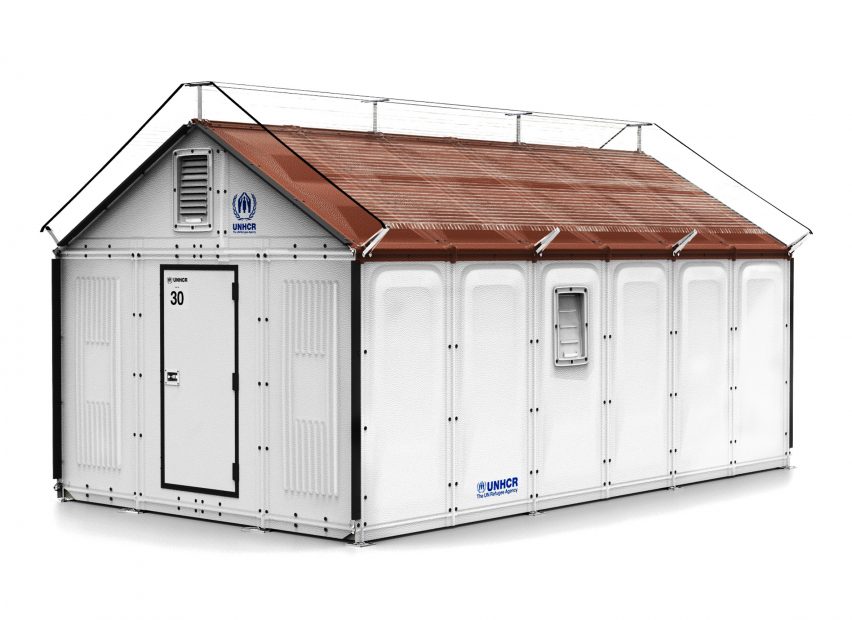
The shelter was developed by IKEA's charitable arm IKEA Foundation and the UNHCR, which ordered 10,000 of the units after it went into production in 2015.
The design won the Design Museum's design of the year award this year.
"It doesn't deserve a design prize in my opinion," Kleinschmidt said. "I don't think it deserves the hype around it. There are more appropriate shelters on the market."
Better Shelter's Terne provided a detailed response to Kleinschmidt's criticisms, which are published in full at the bottom of this story.
However, she said that the organisation had received positive feedback from many users in Iraq, where most of the shelters have been deployed.
One testimonial described the product as "a blessing from god for us in the desert".
"We are so grateful to UNHCR for providing us shelter," said Hamid Abdelraza, who fled his hometown of Fallujah in Iraq with his wife and children due to the threat of attacks by ISIS. The family was at first housed in a tent at the Al Jamea'a refugee camp in Baghdad, and then given a Better Shelter.
"The low ceiling was the worst in the tent," said Adbelraza. "During the summer it was very hot and you couldn't move inside either. In the [Better Shelter] RHU [refugee housing unit], there is space to move unrestricted and we started to buy things to make ourselves feel at home, like a set of drawers and a TV. It provides us with more privacy. My wife and I sleep behind the curtain and my kids sleep on this side, in the main 'room'."
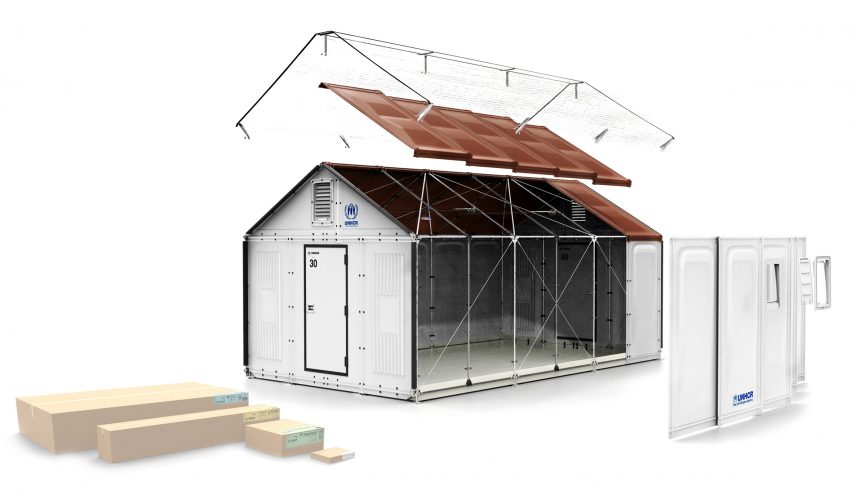
Killian Kleinschmidt is founder of humanitarian consultancy Switxboard. He was previously a UNHCR director and director of the Zaatari refugee camp in Jordan.
In an interview with Dezeen in 2015, he described refugee camps as the "cities of tomorrow" and called for aid-based strategies to humanitarian crises to be replaced by entrepreneurial models that encourage refugees to address their own needs. Last year he contributed to the Refugee Cities report, which proposed turning camps into enterprise zones.